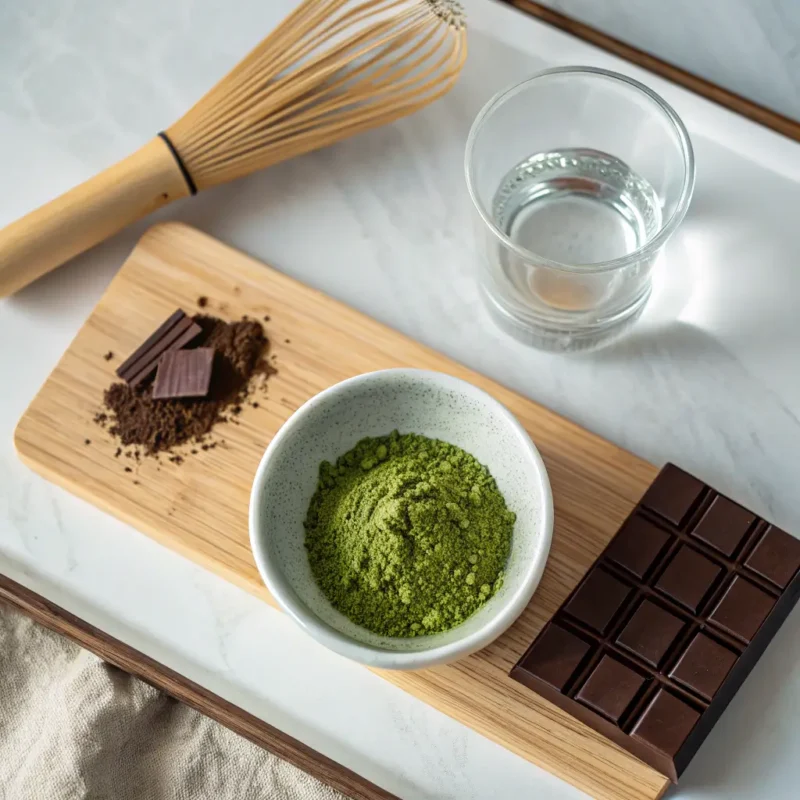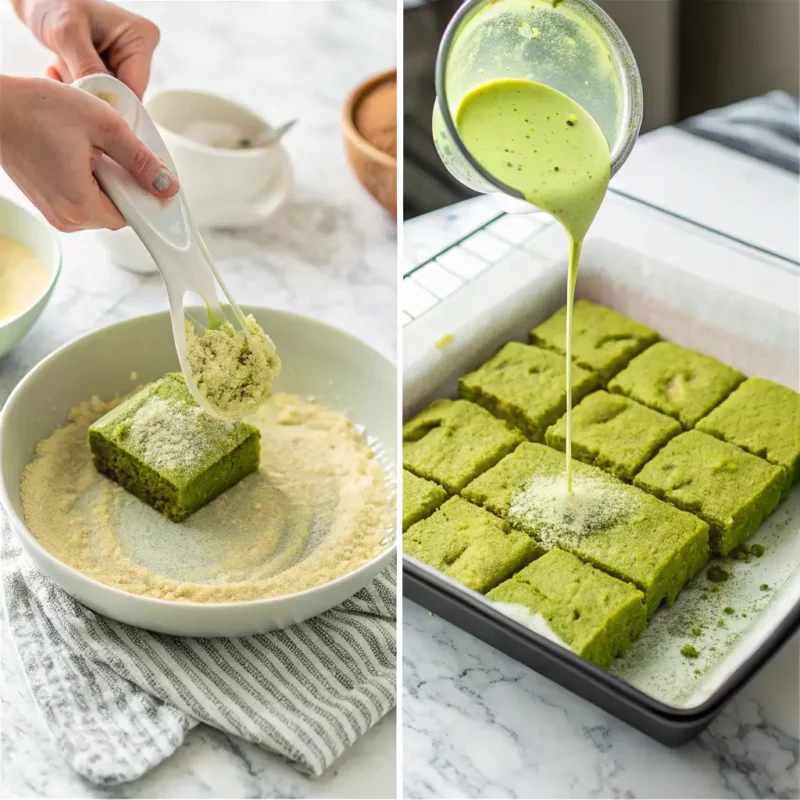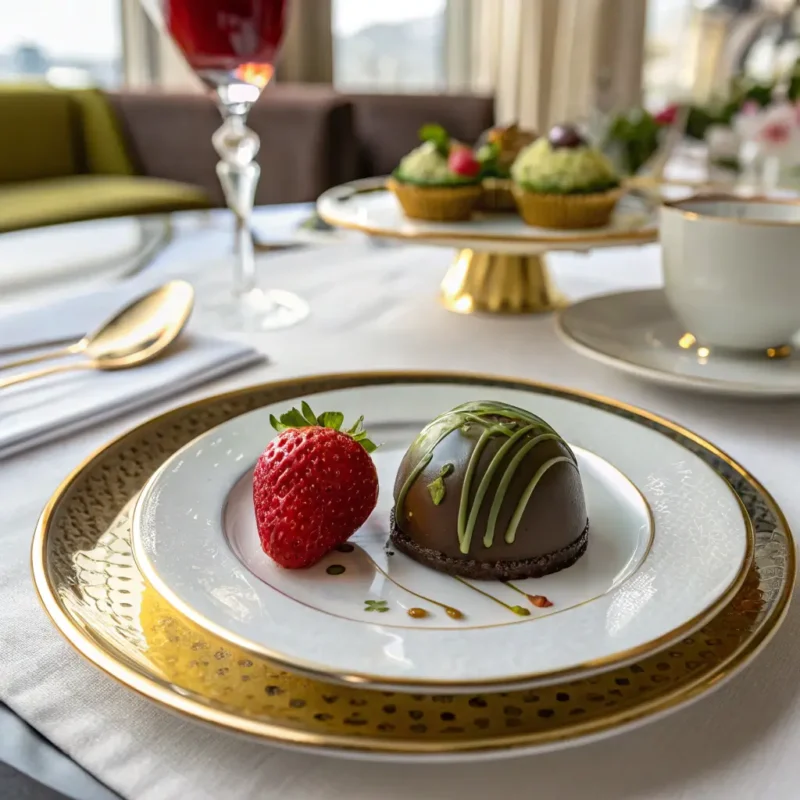Have you ever wondered if matcha tastes like chocolate ? This question has sparked curiosity among many food enthusiasts and casual tea drinkers alike. Both matcha and chocolate are beloved for their rich, indulgent flavors, but do they share more than just a reputation for being treats? In this comprehensive article, we’ll delve into the nuances of both flavors, explore why people might think they taste alike, and uncover the truth behind the does matcha taste like chocolate? debate. Get ready to expand your palate and gain a deeper understanding of these two iconic ingredients.
Exploring the Flavor Profile of Matcha

What is Matcha?
Origins and Cultivation
Matcha is a finely ground powder made from specially grown green tea leaves. It has been a cornerstone of Japanese culture for centuries, used not only in ceremonial settings but also in everyday cooking and beverages. The process of growing matcha involves shading the tea plants for several weeks before harvest, which boosts chlorophyll levels and gives matcha its vibrant green color.
Preparation Methods
To prepare matcha, you whisk the powder with hot water until frothy. The traditional method uses a bamboo whisk, but modern alternatives like electric blenders are popular too. Proper preparation ensures that the full spectrum of matcha’s flavors is unlocked, revealing its unique profile.
The Unique Taste of Matcha
Umami Flavor
One of the standout characteristics of matcha is its umami flavor. This savory note adds depth to the overall taste, making it unlike any other green tea. The umami element comes from the high concentration of amino acids, particularly L-theanine, which develops during the shading process.
Earthy Undertones
While umami takes center stage, earthy undertones provide a grounding effect. These subtle flavors can vary depending on where the matcha is sourced from, adding layers of complexity to the drinking experience. Some describe this as a forest-like aroma, reminiscent of damp soil or fresh moss.
Looking for something sweet? Check out our Cold Stone Heart Cakes for a unique dessert option.
Investigating the Flavor Profile of Chocolate
What is Chocolate?
Types of Chocolate
Chocolate comes in various forms, including dark, milk, and white chocolate. Each type offers distinct flavor profiles due to differences in cocoa content and added ingredients. Dark chocolate, with its higher cocoa percentage, boasts a more intense and bitter taste compared to milk chocolate, which is sweeter thanks to the addition of milk solids. White chocolate, meanwhile, lacks cocoa solids but retains cocoa butter, giving it a creamy texture and a mild, sweet flavor.
Processing and Ingredients
The journey from cacao bean to chocolate bar involves several steps. First, the beans are fermented, dried, roasted, and then cracked open to remove the shells, leaving behind the nibs. These nibs are ground into a paste called chocolate liquor, which can be further processed into cocoa solids and cocoa butter. Sugar, vanilla, and sometimes lecithin are added to create the final product. The quality and freshness of these ingredients significantly influence the chocolate’s flavor.
For home bakers interested in creating a vintage touch, our Vintage Heart Cake guide offers a comprehensive look at this classic dessert.
The Rich Taste of Chocolate
Sweetness and Creaminess
Chocolate is renowned for its sweetness and creaminess, which stem from the sugar and cocoa butter content. The smooth texture of chocolate melts effortlessly in the mouth, creating a luxurious sensation. This combination of sweetness and creaminess makes chocolate irresistible to many, especially when paired with complementary flavors like nuts, fruits, or even spices.
Bitter Notes
While chocolate is often associated with sweetness, it also carries notable bitter notes. These come primarily from the cocoa solids, which contribute to the chocolate’s depth and complexity. The balance between sweetness and bitterness is key to achieving the perfect chocolate flavor. Dark chocolate, in particular, highlights these bitter notes, offering a more sophisticated taste experience.
Does Matcha Taste Like Chocolate?
Direct Comparison of Flavors
Similarities Between Matcha and Chocolate
Despite their apparent differences, matcha and chocolate do share some commonalities. Both possess an umami flavor, though the source differs—umami in matcha comes from L-theanine, while in chocolate, it arises from the fermentation process of cocoa beans. Additionally, both can have earthy undertones, adding to their complex flavor profiles. This shared richness may lead some to believe that matcha tastes like chocolate .
Differences in Taste
However, the primary distinction lies in the specific notes each brings to the table. While matcha offers a grassy, vegetal taste with hints of sweetness and bitterness, chocolate is predominantly sweet and creamy, with a pronounced bitterness from cocoa. The contrast in textures is also significant; matcha is typically consumed as a fine powder or frothy drink, whereas chocolate is solid or liquid, offering a different sensory experience.
Common Misconceptions
Why People Think They Taste Alike
Many people assume that matcha tastes like chocolate because both are green and share certain umami elements. However, the similarities end there. The cultural context and preparation methods further contribute to the misconception. In Japan, matcha is often paired with sweets, leading some to associate its flavor with desserts, including chocolate.
Clarifying the Distinctiveness
It’s crucial to recognize that while matcha and chocolate can complement each other in certain recipes, they remain fundamentally different. Matcha’s unique blend of umami, earthiness, and slight bitterness sets it apart from the sweet, creamy, and occasionally bitter profile of chocolate. Understanding these distinctions enhances appreciation for both ingredients and opens up possibilities for creative culinary pairings.
Wondering if Costco can help you with a heart-shaped cake? Explore your options, customizations, and DIY ideas in our Costco Heart-Shaped Cake article.
Factors Influencing the Perception of Matcha’s Taste
Personal Preferences and Sensory Experience
Individual Taste Sensitivity
Not everyone experiences flavors in the same way. Some people are more sensitive to bitter or umami flavors, while others might find them milder. This variability means that what one person perceives as does matcha taste like chocolate? could differ from another’s experience. Taste sensitivity can be influenced by genetics, age, and even dietary habits, making each individual’s reaction to matcha unique.
Cultural Influence on Perception
Cultural background plays a significant role in how we perceive and appreciate flavors. In Japan, matcha is deeply ingrained in cultural traditions, often enjoyed in ceremonial settings or paired with sweets. This context shapes expectations and associations, potentially influencing how people interpret matcha’s taste. For those unfamiliar with matcha, the initial experience might be surprising or even off-putting, especially if they expect it to resemble something more familiar, like chocolate.
Preparation Techniques and Their Impact
Quality of Matcha
The quality of the matcha you use greatly affects its taste. Premium matcha, such as ceremonial grade, is finely ground and has a smoother texture, enhancing the umami and earthy flavors. Lower grades might contain larger particles, resulting in a grittier texture and less refined taste. Ensuring you’re using high-quality matcha can help clarify whether does matcha taste like chocolate? is a valid comparison.
Water Temperature
Water temperature is another critical factor. Too hot water can scorch the delicate matcha leaves, producing a harsh, bitter taste. On the other hand, water that’s too cool won’t fully extract the flavors, leaving the matcha underwhelming. Ideally, water should be around 175°F (80°C), allowing for a balanced extraction of all flavor components without overpowering bitterness. Proper brewing technique can make or break the matcha experience.
Popular Matcha and Chocolate Combinations

Matcha and Chocolate Blends
Matcha Brownies
Matcha brownies offer a delightful fusion of rich chocolate and vibrant matcha. The earthy undertones of matcha complement the sweetness of chocolate, creating a harmonious balance. These brownies are perfect for those who enjoy experimenting with flavors and want to explore whether does matcha taste like chocolate? in a dessert setting.
Matcha Chocolate Ice Cream
For a refreshing twist, try matcha chocolate ice cream. This treat combines the cool, creamy texture of ice cream with the vibrant green hue and distinctive flavor of matcha. The interplay between the two flavors can sometimes blur the lines, making it easier to understand why some might think matcha tastes like chocolate . Adding a sprinkle of matcha powder on top can enhance the visual appeal and deepen the matcha flavor.
Curious about the flavor profile of matcha? This What Does Matcha Taste Like blog post breaks down the unique flavors of matcha and compares it to other popular beverages.
Pairing Suggestions for Enhanced Flavor
Matcha and Dark Chocolate
Dark chocolate’s robust bitterness pairs exceptionally well with matcha. The umami and earthy notes of matcha elevate the intensity of dark chocolate, creating a sophisticated and nuanced flavor profile. This combination works beautifully in truffles or ganaches, offering a gourmet experience that challenges the notion of does matcha taste like chocolate?
Matcha and Milk Chocolate
Milk chocolate’s creaminess provides a smoother backdrop for matcha’s unique flavors. The sweetness of milk chocolate can temper the slightly bitter edge of matcha, making it more approachable for those new to matcha. Whether in cookies, cakes, or drinks, this pairing can help bridge the gap between matcha and chocolate, allowing for a more nuanced exploration of does matcha taste like chocolate?
Want to take your heart-shaped cake to the next level? Our Decorate Stunning Heart Cake guide provides step-by-step instructions for creating a visually appealing dessert.
FAQs About Matcha and Chocolate
Is Matcha Sweet Like Chocolate?
No, matcha isn’t inherently sweet like chocolate. While matcha does contain natural sugars, its flavor profile leans more towards umami and earthiness rather than sweetness. However, some people might perceive matcha as having a slight sweetness due to its smooth texture and mild bitterness. This perception can sometimes lead to confusion about whether does matcha taste like chocolate? , especially since chocolate is known for its sweetness.
Can You Add Matcha to Chocolate Recipes?
Absolutely! Combining matcha with chocolate can result in delicious and visually striking creations. Matcha’s vibrant green color and unique flavor add an exciting twist to classic chocolate dishes. From matcha brownies to green tea ice cream, incorporating matcha into chocolate-based recipes can enhance the overall taste experience. Just remember to balance the flavors carefully, as matcha’s strong presence can easily overpower the chocolate if not done thoughtfully.
What Makes Matcha Different From Chocolate?
Matcha and chocolate differ in several key aspects. Matcha is derived from green tea leaves and is known for its umami, earthy, and slightly bitter flavors. In contrast, chocolate is made from cocoa beans and is characterized by its sweetness and creamy texture. While both can have umami elements, the sources and overall flavor profiles are distinctly different. Understanding these differences helps clarify why does matcha taste like chocolate? might not always hold true.
How Do You Make Matcha Taste More Like Chocolate?
If you’re curious about making matcha taste more like chocolate, consider pairing it with ingredients that highlight its umami and earthy notes. Adding a bit of sugar or honey can enhance the sweetness, while combining it with dark chocolate can bring out richer, bolder flavors. Experimenting with recipes like matcha brownies or matcha-infused ganache can help achieve a more chocolate-like experience. Remember, the goal isn’t to replicate chocolate but to find a harmonious blend of flavors that satisfies your taste buds.

Conclusion
Recap of Key Points
Throughout this article, we’ve explored the unique flavor profiles of matcha and chocolate, delved into why people might think does matcha taste like chocolate? , and discussed factors influencing taste perception. We’ve also highlighted popular combinations and addressed frequently asked questions to provide a comprehensive understanding of these two beloved ingredients.
Final Thoughts on the Comparison
While matcha and chocolate share some similarities, particularly in terms of umami and earthy undertones, they remain distinct in their overall flavor profiles. Matcha offers a more vegetal, umami-rich experience, whereas chocolate is characterized by its sweetness and creaminess. Appreciating the differences allows us to better enjoy each ingredient for what it brings to the table.
Encouragement for Further Exploration
Whether you’re a seasoned matcha enthusiast or just dipping your toes into the world of green tea, there’s always more to discover. Try experimenting with different preparation methods, recipes, and pairings to deepen your understanding of matcha’s versatility. And don’t hesitate to explore the world of chocolate too—there’s no shortage of delightful combinations waiting to be discovered. Happy sipping and tasting!
Curious about the Bruce Cake? Dive into our Bruce Cake Worth It guide to learn about its flavor, texture, and value.
Understanding how to properly portion and cut a cake? Our Cake Slice Definition article explains everything you need to know about cake slices.
Interested in the nutritional details of your favorite dessert? Find out how many calories are in chocolate cake in our detailed guide.






